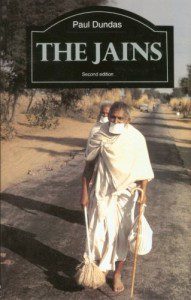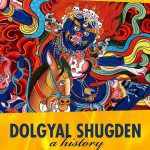As I discussed in a recent post at the Indian Philosophy Blog, there is quite often a divide in approaches taken to the study of religion between what we might broadly call the ‘philosophers’ and the ‘historians’. Philosophers, and I count myself as one of these most days, seek out the meaning of texts, seeing them as doorways into distant lands and into the minds of great thinkers, past and present. We often have to construct meanings through fragmentary and at times conflicting evidence: at one point the great thinker said X, but here we see him/her saying not-X. What happened? And through our collections of Xs and not-Xs we try to paint a picture of who this person was, what his/her life was like, what the society must have been like that fostered such thoughts, and so on.
It is an exciting practice when it is going well. To borrow the term ‘psychonaut’ seems passé, but it is like that: we are traveling through our own reason and imagination into and through the worlds of the greatest minds of human history; at least those lucky enough and deemed worthy of preservation by succeeding generations.
The problem, as Historians will quickly point out, is that what we often conflate what we discover and what we create. Reading a history of discoveries of Buddhism, such as Philip Almond’s The British Discovery of Buddhism, one quickly discovers the truth in the adage that: what an author writes about Buddhism tells us less about Buddhism than it does about the author. And it’s not just Buddhism that has this problem (a fact that all students of Buddhism would do well to remember). In his cautionary chapter, “The Quest for the Historical Socrates” in the Bloomsbury Companion to Socrates, Robin Waterfield writes:
It is in fact generally acknowledged that the Sōkratikoi logoi are a species of fiction, and that the differences between the views of Socrates we find in the Socratics tell us more about the authors than they do about the historical Socrates… The contradictions between the many Socrateses we find in the pages of the Socratic writers is due to the fact that each of them used Socrates as an ideal and a cipher, for his own purposes (see Gomperz 1924)… There was no Socratic school: every follower was free to develop his own ideas and to use ‘Socrates’ to express those ideas. This is why his followers could contradict one another on points of doctrine while, presumably, claiming to be true Socratics. (pp.9-10)
The Buddha did develop a school, which eventually became 18 (according to tradition). But this doesn’t seem to have mattered too much. We still have the potential problem. Buddhism, with it’s amazing diversity of texts and teachings, methods and instructions, allows for an unending diversity of interpretations, say the Historians. We cannot interpret them (lest we simply put forth our own particular prejudices), we can only describe them.
Waterfield goes on though, to argue that we needn’t fall into deep skepticism about Socrates and his views. We do, however, have to keep in mind the potential unreliability of all of our sources and we should always keep an eye out for sources of information outside of our received texts.
Fair enough, most Philosophers say, and then get on with their work.

So when I came across the following from Paul Dundas in his wonderful book, The Jains:
No religious tradition should be reduced to a simple set of basic principles; nor, however congenial it might be to philological research, should an attempt be made to situate the complete essence of a religion in the words of some putative founder, both because it is usually extremely problematic to make objective decisions about what a founder actually said and because religions are obviously highly complex interlocking patterns of practice and belief which ultimately elude fixed categorisation. (p.41)
I thought, “okay, this is a Historian.”
Historians will be careful about just these things and will avoid any sweeping categorizations and broad interpretations of a person, movement, period in history, or religion. But can Historians really avoid that all-too-human urge to do just that, to sum up, to understand and categorize with a broad brush? Dundas concludes that section of his book:
What appears as new [with Jainism], however, and what must have served at the outset to distinguish the Jains from other groups of world renouncers, is the integration of previously established categories such as karma, rebirth and deliverance into a particularly rigorous mode of life based on a uniquely sensitive analysis of the nature of the external world and the various types of living creature which surrounded the individual. It is both the self-control and the compassion generated by this understanding, the awareness that all living creatures to a greater or lesser extent experience the same sort of feelings as humans, and the resultant desire for, as the Jains put it, friendship with all creatures, which mark out Jainism as a religion with universal concerns at its very beginning. (p.44)
It seems that he is in fact making at least some tentative assertions about basic principles (karma, rebirth, a particularly rigorous mode of life, a uniquely sensitive analysis, and so on) leading to a fixed, though loose, categorization of Jainism as a religion of self-control and compassion and desire for friendship with all creatures and universal concerns.
It seems to me, again putting on my Philosopher’s hat, that if we want to say anything meaningful about a tradition such as the Jains or Buddhists, or even about a single man like Socrates, Jesus, or the Buddha, we need to at times reduce them to basic principles and make at least provisional categorizations. This is not only possible, but necessary, for our further understanding. And if we do, as accusers hold, often impart our own views on the great thinkers and traditions we interpret, then this must be the price we pay for that understanding.












